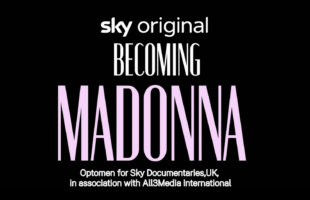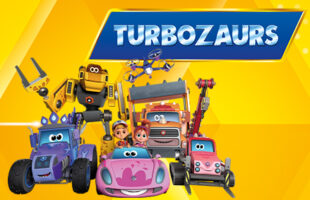For a show that features a few hot – and not so hot – car models, three cheeky British TV presenters and a mysterious mute car afi cionado named Stig, the numbers are staggering: 350 million viewers in 190 countries, 10 million views and close to 57,000 subscribers on YouTube, plus 9.1 million fans on Facebook and in the UK, more than 80 per cent of people have watched at least part of a Top Gear episode.
“It’s a dream production to be involved with,” said Adam Waddell, Top Gear’s General Manager. “And it is the ultimate example of how to create a powerful TV brand.
The road to recognition
“At the heart of the brand you need a really strong and original product. There’s a lot of talk these days about 360-degree commissioning, which is about the idea of creating a TV format having already fi gured out what the business and spin off opportunities are. This is seen a lot in the movie business, rather than the TV business, although it is becoming the norm in TV as well. An example is Pixar’s Cars, which is actually the second most successful movie franchise ever for merchandizing after Star Wars. It generated US$10billion in merchandise and sold 220 million toy cars. In the US, 50 per cent of 6 to 11 year old boys own a toy car and a movie T-shirt. The second cars movie was released this year, Cars 2. It didn’t have brilliant reviews. But you wonder whether actually the movie is actually a vehicle for merchandise sales and could be more important than the movie itself?”
Waddell said this is not the modus operandi for the BBC. It’s about making a good TV show, the business comes second. “If we had sat down and planned how to make a TV show and a brand that had such a global reach, with a mass of spinoff opportunities, it would have all happened very differently and certainly it would have failed… The British charm, the humour and a refusal to compromise has made Top Gear so popular with its international audience.”
And its appeal is not just from car lovers and not only men. Close to 40 per cent of the show’s viewers are female. And, startling as it may sound, China’s Top Gear, which launched in April, has close to 65 per cent female viewers.
“Kids also enjoy it because of the humour and childish sort of mischief that runs throughout the show,” said Waddell, adding, “The presenters are a core part of the process and they make a show which makes them laugh and they want to watch.”
Accelerating business
“Once we built the show and a global fan base, the next thing was to build the brand and the business around it,” Waddell continued. “Our approach was about giving the fans more of what they love and maintaining this brand for as long as possible, rather than squeezing out as much value as possible.”
The fi rst spinoff product to be launched was Top Gear Magazine in 1993. In Asia, the magazine is published in Korea, China, Singapore, Malaysia, Philippines and Thailand and is one of the most popular motoring titles worldwide.
DVD sales of the UK show have also been snapped up with 4 million sold to date. Fifty books have been written and it is also one of the most popular shows on Apple’s iTunes Store.
“With a broad audience, you get the opportunity to also create a huge range of licensed products around the show. By Christmas this year, in the UK we will have about 200 different products on sale for fans ranging from toys and games to toiletries.
“But I think it’s very important we closely control the products we produce. For every product we say yes to, there’s probably another 20 we say no to. The show’s popularity is based on its reputation so it’s really important to protect those brand values. I think it’s only right if you are a fan of the show you take the opportunity to show your passion and wear the T-shirt or buy the DVD. But there’s only so far you can stretch these brands and we do say no to a lot of stuff.”
Waddell also noted Top Gear Live, the theatrical version of the TV show, which has been performed in such places as Russia, New Zealand and Hong Kong. “This is the sort of stuff I get a real kick out because it allows the fans to get up close and personal with the brand and touch it and feel it and be part of it. I think that’s pretty important.”
Powering a brand
Waddell said the success of Top Gear was that they developed the brand with a focused goal. “We approached it in the way a brand like Coca Cola or Mercedes might approach one of their products, with a clear strategy for the brand team to execute.
“One of the other things we have done that has contributed to Top Gear’s success is that about fi ve years ago, we set up a company to run the commercial side of the business. We then brought in our lead presenter Jeremy Clarkson and the producer of the show Andy Wilman and we gave them a stake of the business, which allowed them to participate and share in the profi ts. This has been a really effective and engaging way to help us develop Top Gear and grow the business further,” said Waddell.
He said, in today’s world of numerous brands and multiple channels, “Anything unique is of especially high value. Fans want to be able to participate and engage with the brands they love as opposed to just consuming them. And consumers have got more choices these days. So their expectations of brands are higher so it’s real important to ride with them rather than disappoint them.”
Waddell concluded, “We understand that our audiences around the world are different and we acknowledge that and at Top Gear, we always put ourselves in the shoes of the audience.”








